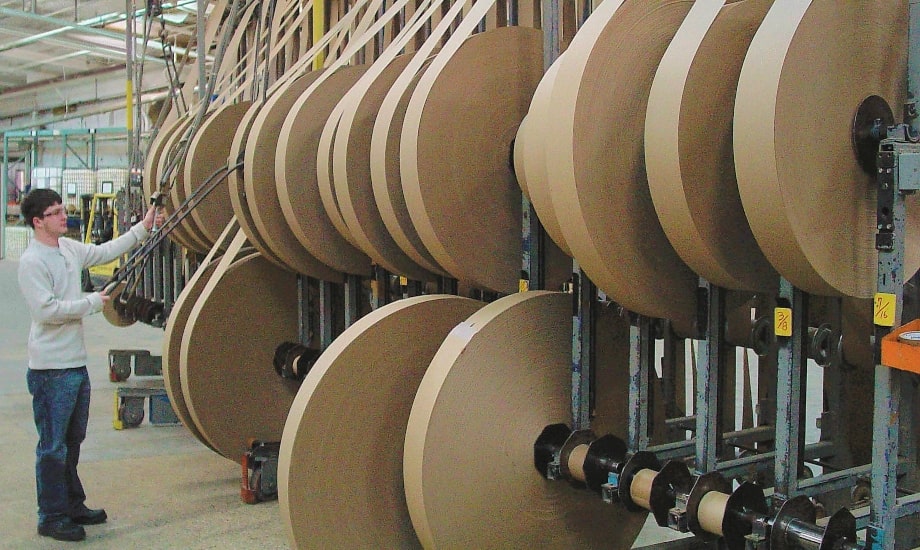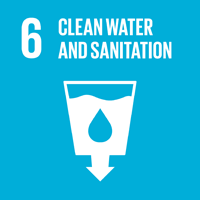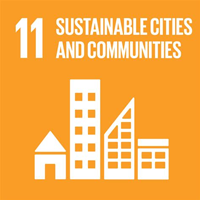- Sustainability at Greif
- Nachhaltigkeitsstrategien
- Ziele und Leistung
- ESG-Reporting-Indizes
- Bericht-Downloads
Highlights
- Greif’s approach to water management stems from our responsibility to protect key resources for future generations. A critical piece of this approach is maintaining compliance with local and global water regulations that apply to our operations across the world.
- Our water management priorities focus on efficient and responsible water use in our mills and in water-scarce regions throughout our operations. We leverage standardized environmental data dashboards across our mills enabling us to effectively manage water use in our paper production processes.
- In 2024, we furthered our progress in water conservation initiatives. We eliminated direct discharges into local waterbodies from our Baltimore mill. In the future we continue to aim to reduce direct discharges at other facilities, with plans to phase out discharges at the Taylors mill by 2026.
- Our water conservation efforts contributed to a 10 percent decline in water withdrawal and a 2 percent decline in water discharges since 2019.
Warum Wasser wichtig ist
Greif prioritizes responsible management of our water resources, aiming to mitigate negative impacts associated with water withdrawals, discharges, and stormwater runoff. We recognize that water is a vital resource, and we strive to safeguard it for the benefit of future generations. Following The Greif Way, we seek opportunities to contribute to positive outcomes for the environment and for communities with whom we share a water source. To that end, we pursue opportunities to improve water efficiency and elevate water quality across our organization with a focus on water-intensive operations at our mills. In efforts to comply with water quality requirements, water discharged from our facilities undergoes thorough treatment, whether on site or by a trusted third party. All treatment measures strictly adhere to relevant regulations so that the discharged water meets high standards of health and safety for wildlife and the local communities.
Our Approach
Unser Engagement für die globale Wassereinsparung und -effizienz ist in unserer Umwelt-, Gesundheits- und Sicherheitsrichtlinie (EHS). We enlist our EHS team to monitor regulatory compliance and implement optimal practices in water treatment and recycling across all facilities. The EHS team also proactively oversees water usage in critical facilities, including those in water-stressed areas to help optimize our water footprint. Within our environmental structure, we maintain a robust compliance management system with dedicated support. Greif champions and empowers local management teams to improve water efficiency, enhance water quality, minimize impact on local water sources, and reduce associated costs. Our approach extends to managing water discharge in strict compliance with individually allocated water permits.
We recognize water is a critical element of the manufacturing processes at our mills and understand the impacts irresponsible water consumption can have on local communities and ecosystems. To support sustainable water usage at Greif, we have worked diligently to deploy advanced water management practices at paperboard mills within our Sustainable Fiber Solutions business, which accounts for approximately 90 percent of our total water usage. At these sites, we have implemented reduction and recycling processes including collecting HVAC cooling water and compressor cooling water for reuse at our Riverville mill, installing ultra-low water consumption mechanical seals on process pumps at our Massillon mill, and installing effluent treatment plants at multiple mills that not only reduce biochemical oxygen demand but also reduce water consumption overall. We plan to evaluate sustainable water management practices moving forward with ambitions to reduce non-contact cooling water discharges at our paper mills.
Mill Water Efficiency Data (compared to 2019 baseline)
- 2024 Mills Production Decrease: 18 percent
- 2024 Total Water Withdrawal Decrease: 10 percent
- 2024 Total Water Discharge Decrease: 2 percent
- 2024 Total Water Consumption Decrease: 65 percent
- 2024 Water Consumption Rate (Water Consumption per MT of Production) Decrease: 46 percent
Effective management of untreated stormwater is central to Greif’s water strategy, upholding our ambitions to protect local water resources. To carry out this approach, we place a strong emphasis on effective stormwater management practices across our plastic and steel facilities. Regular and thorough stormwater sampling and testing are essential parts of our operations, maintaining strict adherence to safety standards and regulations while identifying continuous improvement opportunities. We provide comprehensive annual training to all relevant colleagues to help build a culture of responsible water management throughout our organization.
Preventing and responding to unforeseen water events like spills are crucial aspects of our approach to water management. In addition to site-specific stormwater pollution prevention plans and robust spill prevention controls at our key facilities, we have comprehensive global contingency plans and emergency procedures designed to address and mitigate any potential or actual spills. Our operations emphasize compliance, utilizing our Environmental Management System (EMS) to track spills or releases that may impact groundwater and soil and identify corrective actions to remediate such events. We are currently evaluating potential improvements to the EMS to capture additional quantitative data to track trends over time and improve our incident response efforts.
An essential aspect of our approach to water management is compliance with emerging water-related regulations. By adopting sustainable water practices, we can minimize potential sources of noncompliance related to water management while simultaneously improving operational efficiency. Responsible water management also drives the mitigation of risks that pose a threat to Greif’s daily operations and long-term business success, specifically in water-stressed regions where we operate. Annually, we use the World Resources Institute’s Aqueduct Water Risk Atlas tool to consider which of our facilities operate in areas of water stress. To mitigate negative impacts in these regions, we have adopted policies and practices designed to reduce excess water consumption such as replacing faulty valves, promoting water recycling, installing touchless faucets and harvesting rainwater. Greif recognizes that operating responsibly within water permit requirements at every facility is critical to accomplishing our mission of securing water sources for future generations.
Goals, Progress, & Performance
Ziel 2025:
- Reduzieren Sie den biochemischen Sauerstoffbedarf in Kilogramm um 10 Prozent pro Tonne Produktion in den Werken Riverville und Massillon auf Basis eines Basiswerts von 2014 bis zum Ende des Geschäftsjahres 2025.
As of the end of 2024, we have reduced the biochemical oxygen demand by 67.6 percent from our 2014 target baseline of 1.40.
Den größten Teil unseres Wasserverbrauchs verbrauchen wir in unseren Kartonfabriken, wo wir das Wasser vor der Aufbereitung und Entsorgung mehrmals wiederverwenden. Unsere Fabriken sind für etwa 90 Prozent unseres weltweiten Wasserverbrauchs verantwortlich.
Im Jahr 2022 beauftragten wir einen externen Berater mit der Bewertung des Wasserverbrauchs in unseren Kartonfabriken. Im Rahmen dieser umfassenden Studie wurden Wassermodelle für jede unserer Fabriken entwickelt, die neue Möglichkeiten zur Minimierung des Wasserverbrauchs aufzeigten. Im Jahr 2023 identifizierten wir drei Projekte mit konkreten Maßnahmen zur Reduzierung des Wasserverbrauchs in unseren Fabriken, deren Umsetzung in den nächsten zwei Jahren derzeit geprüft wird.
Greif utilizes key performance indicators to monitor water usage and wastewater treatment. We continuously streamline our environmental data dashboards across our facilities to develop a more comprehensive understanding and effective management of our water, effluents, and energy data. Improvements in this area enable us to consistently discover and leverage water efficiency opportunities. Please see our report’s Umweltmanagementsysteme section for more information about our evolving approach to environmental data oversight.
Kreislaufwirtschaft praktizieren
Im Greif-Werk Austell in Georgia haben wir ein Projekt zur Entwässerung von Abwasserrückständen gestartet, um Abfall in Biokraftstoff umzuwandeln. Bei diesem Kreislaufwirtschaftsverfahren werden verdickte Feststoffe von einer schwimmenden Sedimentschicht auf eine Entwässerungspresse geschwemmt. Die fließfähigen Feststoffe werden entwässert, bis sie an einen Ort transportiert werden können, wo sie an der Luft getrocknet, mit anderen Materialien vermischt und als zusätzlicher Kesselbrennstoff verwendet werden können. Dieser Prozess ermöglicht nicht nur die Wiederverwendung von Materialien, um von Anfang bis Ende den größtmöglichen Nutzen zu erzielen, sondern spart der Anlage auch Deponiegebühren.

Wassereinsparung in unserem Werk in Florence, Kentucky
Ende 2019 installierte Greifs Werk in Florence, Kentucky, eine Abwasseraufbereitungsanlage, um unsere Sondermüllbelastung zu reduzieren und Wasser wieder in die Stadt zurückzuführen. Der Prozess funktioniert, indem Wasser in das System eingeleitet wird, fast 100% der Schadstoffe aus dem Lackierprozess entfernt und das gereinigte Wasser an die örtliche Aufbereitungsanlage geleitet wird. Das Wasser wird dann von der Aufbereitungsanlage recycelt und an die Gemeinde weiterverteilt. Das beim Prozess übrig gebliebene Material wird über den Müll statt über Sondermüll entsorgt. Als die Anlage Mitte 2020 vollständig in Betrieb ging, hat der Prozess nicht nur den von der Anlage erzeugten Sondermüll erheblich reduziert, sondern auch die Abfallkosten um $40.000 pro Monat gesenkt.





